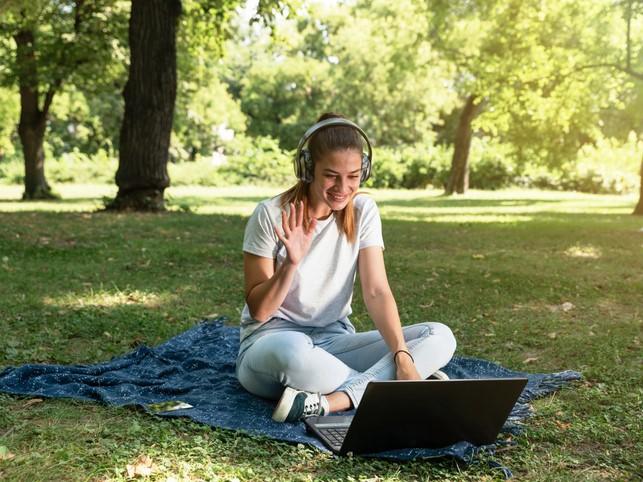
Socialising is hugely important, but virtual campuses help learning, too

Say the word “university” and the image that forms in the mind is likely a physical campus. Campus is where we interact with others in both scheduled and unexpected ways that lend meaning to those interactions, and it can be difficult to approximate the same levels of immediacy and spontaneity online.
It might be tempting to characterise such tangible campus connections as mere socialising or students just hanging out together. But the stakes may be much higher than that. Cognitive science reveals that a sense of community, social interactions and collaborative activities all enhance our ability to learn.
As Joshua Eyler argues in How Humans Learn, “the social element of education is not optional but necessary if students are to succeed”. Thus, our physical campuses promote the very interactions that are key to the learning enterprise.
The pandemic, as we know, disrupted these notions of physical space, with classes, meetings and other activities shifting online. But that revealed to the rest of us what online learners had been experiencing all along: an instructional experience that was separated and distant from the material campus. And for many students, lest we forget, online learning is more compatible with complicated schedules and responsibilities, more accessible than coming to campus and may simply be their preferred way of taking courses.
As institutions plan their return to campus, then, how might we bring the things we value about the campus experience and the sociality of learning to online classes? And, with a sense of belonging firmly set at the heart of the campus experience, how can we promote belonging and connection in online courses?
In the absence of a physical classroom, we will need to create low-stakes opportunities for students to get to know one another, even before they start working together on course material. Last autumn, for example, I encouraged my students to create and post short videos about themselves, and I made one as well.
Even in courses that are intended to be asynchronous, we can build in at least a few synchronous moments (which may, depending on student commitments, have to be scheduled as sub-groups) to provide opportunities for real-time conversation and interaction.
We can begin synchronous elements of the course with check-ins or exchanges around light-hearted questions (is a hot dog a sandwich? If you could have one superpower, what would it be?) or we might encourage students to create a playlist for the course that can be either accessed by asynchronous students or played at the beginning of synchronous sessions. Steps such as these can form the base for what Eyler calls “social pedagogies” − techniques and activities that promote shared and collaborative intellectual endeavours, which in turn enhance student learning.
We should also encourage students to create their own backchannels for conversation and chat. We know that students are sometimes hesitant to speak or ask questions in class, so group texts where they can exchange ideas, ask questions or even discuss things wholly unrelated to class, without instructor mediation, may provide an outlet for more spontaneous and forthcoming interactions. These can become useful spaces for community building, and we might create other kinds of open-ended spaces within our courses, too.
Some faculty set aside hours on Zoom (or similar) where students can just show up and work on a pending assignment, with the instructor and other students on hand to answer questions or provide feedback. This shared time of quiet work on a common enterprise is another way to foster a sense of connection and belonging.
Finally, we should consider how to bring more of the campus to our online courses. The campus houses not just our classrooms and faculty offices but also services. We might already feature academic resources in our courses − writing centres, maths labs etc − as appropriate, but what about the others? What if we found ways to bring student life, student activities, mental health resources and the full range of campus services into our online offering?
Whether as videos or modules for asynchronous students or five-minute presentations at the beginning of synchronous sessions, demonstrating to our online students that they are not, in fact, completely disconnected from the campus experience could go a long way to promoting a sense of belonging and help students imagine themselves as part of not simply an online course but a larger community.
Steps such as these are just the beginning, but they underscore the place of connection, belonging and sociality in promoting learning. We can begin to translate and adapt what we value about the physical campus for online courses now. In doing so, we will not simply be encouraging students to get to know each other and become acquainted with campus services, we will be nurturing their capacity to learn.
Elizabeth Lehfeldt is a dean and a professor of history at Cleveland State University, US.


